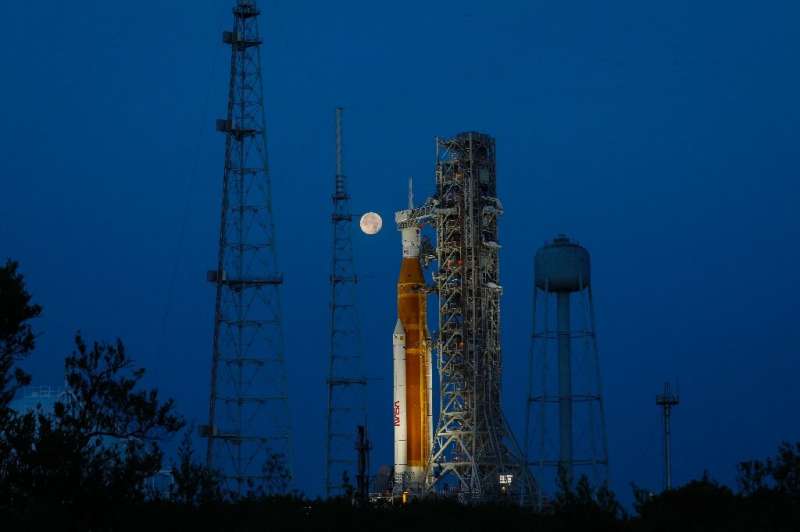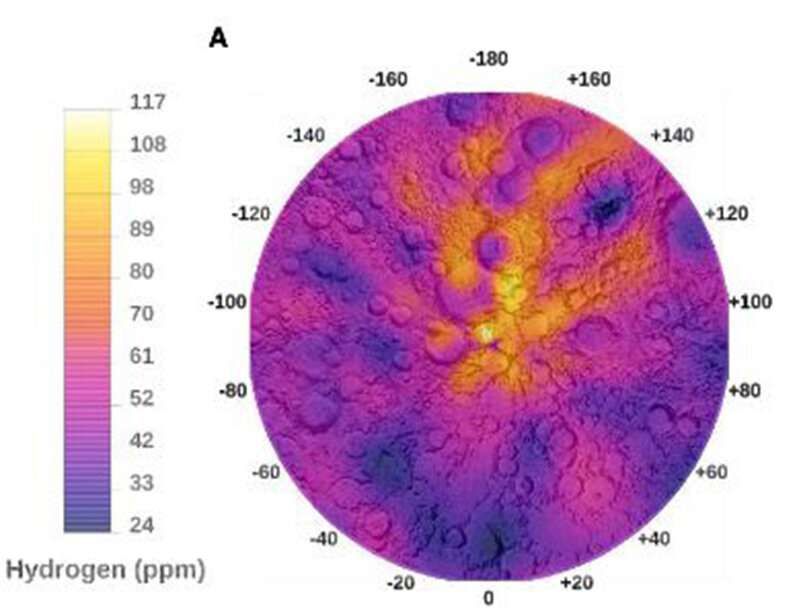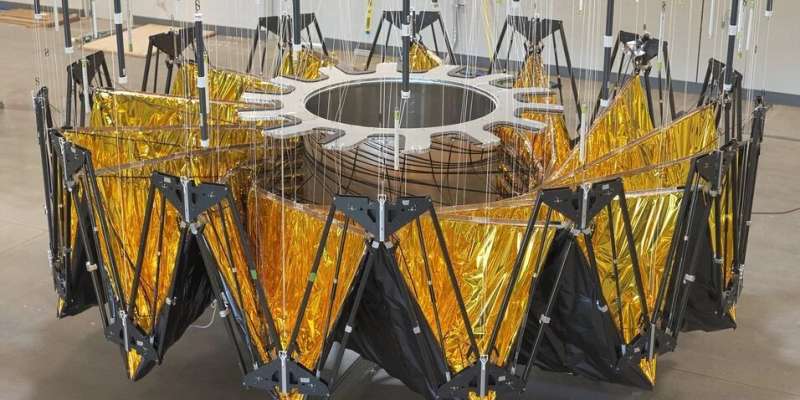
Copernical Team
Webb telescope may have already found most distant known galaxy
 Just a week after its first images were shown to the world, the James Webb Space Telescope may have found a galaxy that existed 13.5 billion years ago, a scientist who analyzed the data said Wednesday.
Known as GLASS-z13, the galaxy dates back to 300 million years after the Big Bang, about 100 million years earlier than anything previously identified, Rohan Naidu of the Harvard Center for As
Just a week after its first images were shown to the world, the James Webb Space Telescope may have found a galaxy that existed 13.5 billion years ago, a scientist who analyzed the data said Wednesday.
Known as GLASS-z13, the galaxy dates back to 300 million years after the Big Bang, about 100 million years earlier than anything previously identified, Rohan Naidu of the Harvard Center for As A New Method to Detect Exoplanets
 In recent years, a large number of exoplanets have been found around single 'normal' stars. New research shows that there may be exceptions to this trend. Researchers from the Autonomous University of Nuevo Leon (UANL), the National Autonomous University of Mexico (UNAM), and New York University Abu Dhabi suggest a new way of detecting dim bodies, including planets, orbiting exotic binary stars
In recent years, a large number of exoplanets have been found around single 'normal' stars. New research shows that there may be exceptions to this trend. Researchers from the Autonomous University of Nuevo Leon (UANL), the National Autonomous University of Mexico (UNAM), and New York University Abu Dhabi suggest a new way of detecting dim bodies, including planets, orbiting exotic binary stars When Mars throws you a curveball Sol 3539-3540
 The rover has been making its way along the "Bolivar" ridge, dodging small boulders and rocks that have apparently eroded off the hillside as seen in the above engineering camera image. Unfortunately, due to the complex terrain our last drive ended about 11 meters short of its anticipated location.
Because of the unexpected rover heading, the antenna we usually use to uplink plans directly
The rover has been making its way along the "Bolivar" ridge, dodging small boulders and rocks that have apparently eroded off the hillside as seen in the above engineering camera image. Unfortunately, due to the complex terrain our last drive ended about 11 meters short of its anticipated location.
Because of the unexpected rover heading, the antenna we usually use to uplink plans directly Unequal siblings: Ius and Tithonium Chasma
 When NASA's Mariner 9 spacecraft reached Mars more than 50 years ago at the end of 1971 and began to explore the planet from orbit, there was initially great disappointment at the control centre: virtually nothing could be seen in the images sent to Earth. At that time, a global dust storm was raging on Mars, which made it impossible to see the surface. Only the peaks of the highest volcanoes st
When NASA's Mariner 9 spacecraft reached Mars more than 50 years ago at the end of 1971 and began to explore the planet from orbit, there was initially great disappointment at the control centre: virtually nothing could be seen in the images sent to Earth. At that time, a global dust storm was raging on Mars, which made it impossible to see the surface. Only the peaks of the highest volcanoes st Futuristic Space Habitat lands at Institut Auf Dem Rosenberg
 Pioneering Swiss boarding school Institut auf dem Rosenberg unveiled today - the anniversary of Neil Armstrong and Buzz Aldrin's famous moon landing - the Rosenberg Space Habitat (RSH), which will serve as an experimental lab for students to explore and actively shape the future of humanity on our planet and beyond. Co-created by Rosenberg students and SAGA Space Architects with sustainable mate
Pioneering Swiss boarding school Institut auf dem Rosenberg unveiled today - the anniversary of Neil Armstrong and Buzz Aldrin's famous moon landing - the Rosenberg Space Habitat (RSH), which will serve as an experimental lab for students to explore and actively shape the future of humanity on our planet and beyond. Co-created by Rosenberg students and SAGA Space Architects with sustainable mate Goodyear joins Lockheed Martin to commercialize lunar mobility
 The Goodyear Tire and Rubber Company supplied essential products for NASA's Apollo program, including the Apollo 11 mission which landed on the Moon 53 years ago today. The company will continue that tradition-focusing on lunar vehicle tires-by joining Lockheed Martin in its development of a lunar mobility vehicle.
Since Apollo, Goodyear continued innovating alongside NASA to advance desig
The Goodyear Tire and Rubber Company supplied essential products for NASA's Apollo program, including the Apollo 11 mission which landed on the Moon 53 years ago today. The company will continue that tradition-focusing on lunar vehicle tires-by joining Lockheed Martin in its development of a lunar mobility vehicle.
Since Apollo, Goodyear continued innovating alongside NASA to advance desig Australian rocketry team regains sky wings with triple win at Spaceport America Cup
 The USYD Rocketry Team has been announced as the overall winner of the Spaceport America Cup intercollegiate rocketry competition, held annually in New Mexico. Competing against 97 student teams from around the globe, including ETH Zurich and the Norwegian University of Science and Technology, the University of Sydney team placed first in three categories - winning the overall competition with t
The USYD Rocketry Team has been announced as the overall winner of the Spaceport America Cup intercollegiate rocketry competition, held annually in New Mexico. Competing against 97 student teams from around the globe, including ETH Zurich and the Norwegian University of Science and Technology, the University of Sydney team placed first in three categories - winning the overall competition with t NASA's new Moon rocket to launch as soon as August 29

Mark your calendars: NASA's Artemis program to return to the Moon could launch its first uncrewed test flight as soon as August 29, the agency said Wednesday.
Artemis-1 is the first in a series of missions as the United States seeks to return humans to the Moon, build a sustained presence there, and use the lessons gained to plan a trip to Mars sometime in the 2030s.
Assembling the first global map of lunar hydrogen

Using data collected over two decades ago, scientists from the Johns Hopkins Applied Physics Laboratory (APL) in Laurel, Maryland, have compiled the first complete map of hydrogen abundances on the Moon's surface. The map identifies two types of lunar materials containing enhanced hydrogen and corroborates previous ideas about lunar hydrogen and water, including findings that water likely played a role in the Moon's original magma-ocean formation and solidification.
APL's David Lawrence, Patrick Peplowski and Jack Wilson, along with Rick Elphic from NASA Ames Research Center, used orbital neutron data from the Lunar Prospector mission to build their map. The probe, which was deployed by NASA in 1998, orbited the Moon for a year and a half and sent back the first direct evidence of enhanced hydrogen at the lunar poles, before impacting the lunar surface.
Engineer uses ancient art of origami to solve a very modern aerospace problem

If you've ever made an origami paper crane, using folds and creases to transform a square piece of craft paper into the delicate long-necked bird, it may seem odd that those same folding techniques are being used to develop structures used in one of the most advanced areas of modern technology: space missions.
Yet aerospace engineers have turned to the millenary art of origami to solve a serious conundrum: How do you fit massive structures, like shields that can block starlight and sails that can help propel spacecraft, into the significantly smaller rockets that carry these structures into space? While the sizes of each of these structures vary, picture yourself trying to fit a beach umbrella with a 28-meter diameter (about the length of a basketball court) into a minivan.
